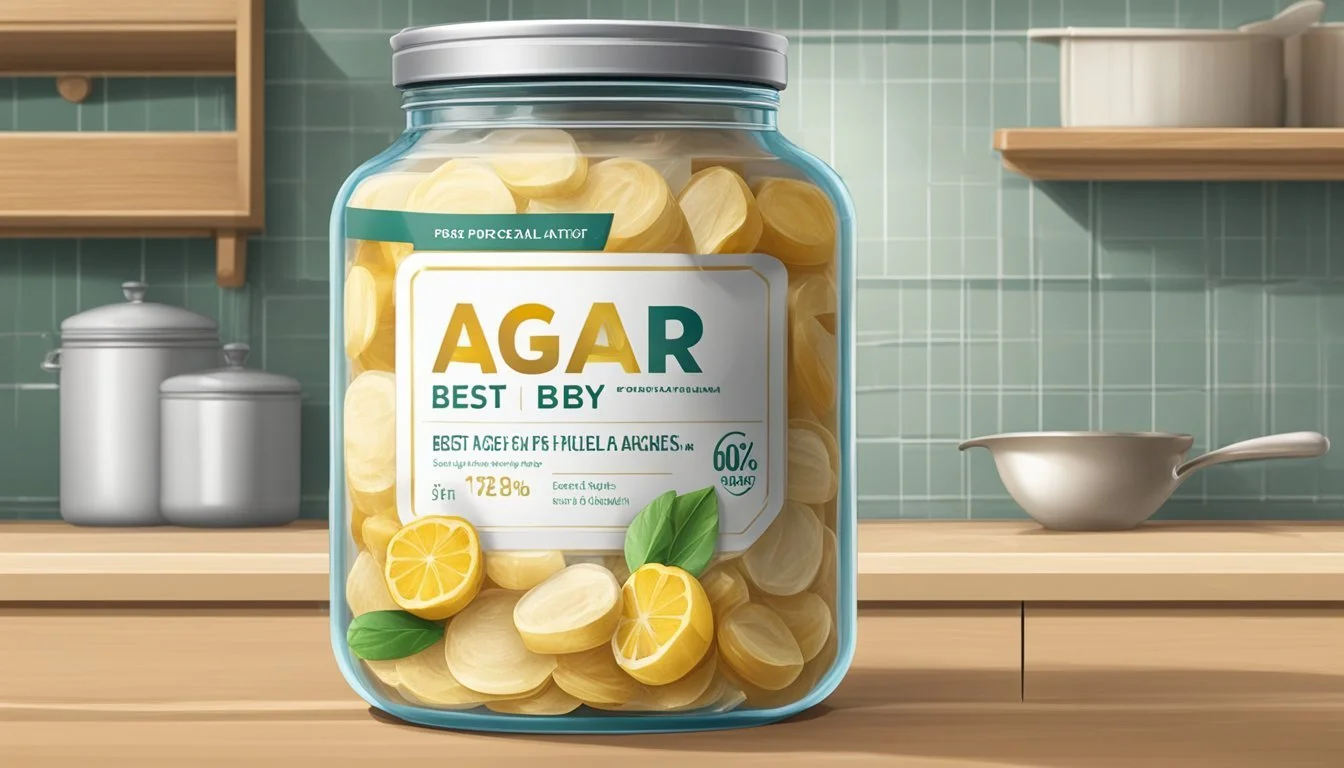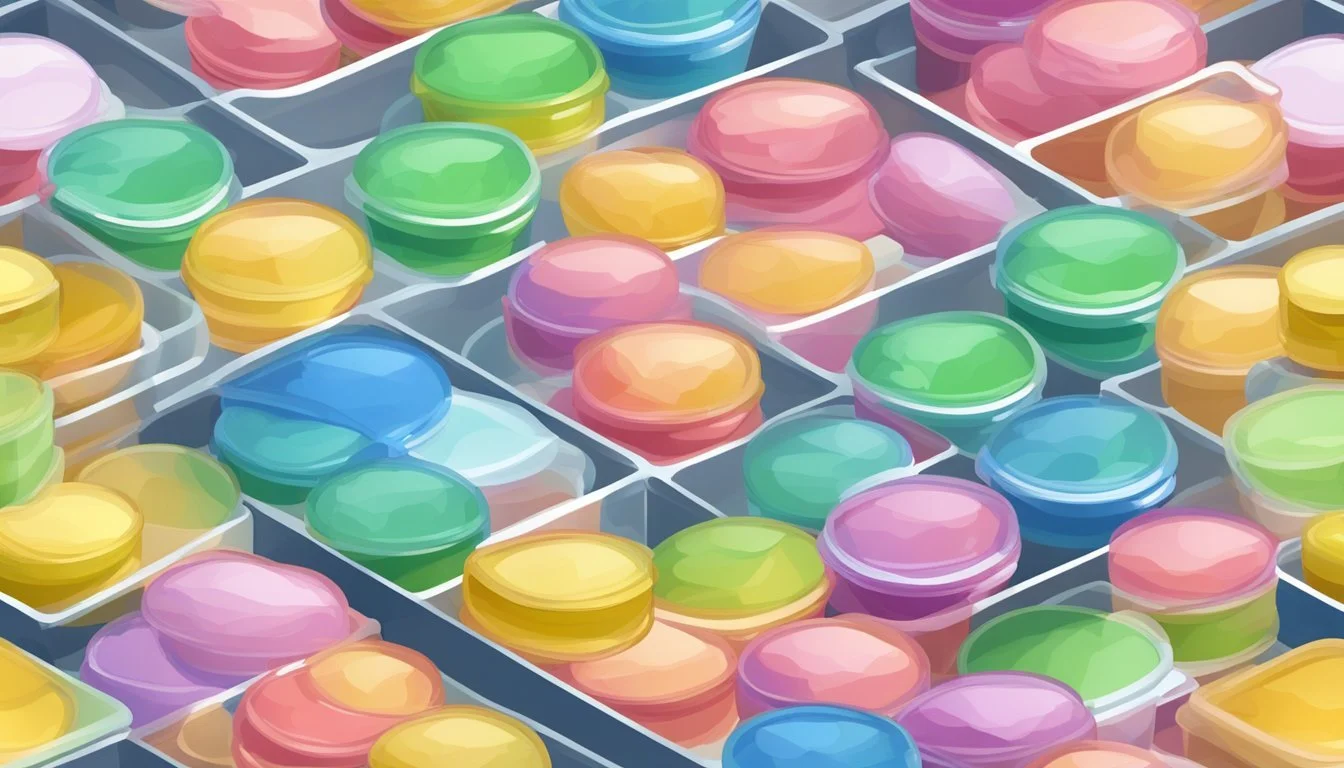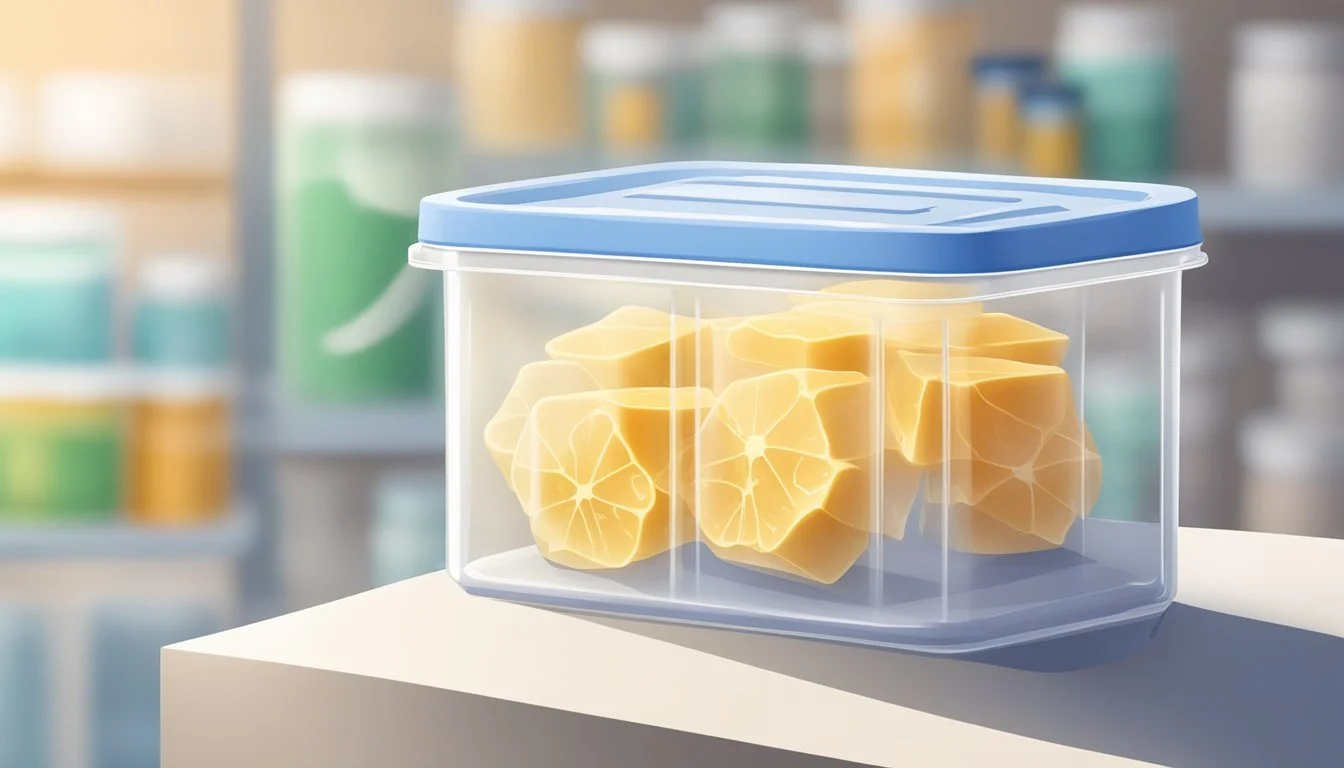Do Agar Flakes Expire?
Shelf Life and Storage Tips
Agar flakes, derived from seaweed, are a popular gelatin substitute used in many vegan and vegetarian dishes. They do have an expiration date, but if stored properly, they can last a long time. When kept in a dry, cool place away from sunlight and moisture, their gelling properties remain intact for an extended period.
This ingredient is prized not only for its ability to form gels but also for being a rich source of fiber, calcium, and iron. Those using agar flakes in the kitchen can continue to enjoy their benefits even past the printed date, provided they are stored correctly. This extends their usability, reducing waste and ensuring that this versatile culinary tool remains available for your cooking needs.
Its role as a gelatin substitute makes it essential for various dishes, especially in vegan and vegetarian cuisine. Understanding how to store agar flakes properly will ensure they retain their effectiveness, allowing home cooks and culinary enthusiasts to explore diverse recipes without concern about the flakes expiring prematurely.
Understanding Agar Flakes
Agar flakes, derived from red algae, serve as a vital gelling agent in vegan and vegetarian cooking. This section explores their composition, culinary applications, and comparisons with other thickeners.
Composition and Properties
Agar flakes come from Gelidium and Gracilaria species of red algae. They are created by boiling the algae, purifying it, and then dehydrating it. Agar is known for its strong gelling properties, forming firm gels at much lower concentrations than other thickeners.
It is rich in fiber, iron, and calcium, making it not only a useful ingredient but also a nutritious one. Unlike gelatin, which is derived from animal collagen, agar serves as a vegan substitute for gelatin. This makes it ideal for vegan and vegetarian recipes.
Agar in Culinary Uses
In culinary contexts, agar flakes are popular for their versatility. They can be used in a variety of recipes such as jellies, custards, and other desserts. To use agar flakes, one typically dissolves them in water, brings the mixture to a boil, and then simmers until fully dissolved.
When mixed with other vegan cooking ingredients, agar agar maintains a stable gel even at room temperature. This makes it suitable for both hot and cold dishes. Since agar sets more firmly than gelatin, adjustments in recipe measurements may be necessary to achieve the desired texture.
Agar Versus Other Thickeners
Comparing agar flakes to other thickeners highlights its unique properties and advantages. Unlike cornstarch and egg-based thickeners, agar does not require the presence of specific conditions to activate. Cornstarch, for instance, often needs to be mixed with cold liquids to avoid clumping and then heated to thicken.
Arrowroot and potato starch can act as alternative thickeners, but they do not match the gelling strength of agar. Gelatin, made from animal parts, has a softer texture compared to agar and is not suitable for vegan diets.
Agar’s ability to form a gel at a lower temperature and its strong gelling power make it superior to other thickeners. Additionally, it doesn't alter the flavor of dishes, offering a neutral base for various culinary creations.
Food Safety and Shelf Life
Agar flakes are known for their long shelf life, but it's important to store them properly to maintain quality and prevent spoilage. Specific indicators of expiration and various factors can influence their longevity.
Expiration and Quality Indicators
Agar flakes, when stored correctly, can last for several years beyond their expiration date. Key indicators of quality include odor, color, and texture. Fresh agar flakes should have a neutral odor, a consistent pale color, and a brittle texture.
If the flakes develop an off odor or discoloration, it may be a sign of contamination or spoilage. Changes in texture, such as becoming sticky, can also indicate that the product is no longer suitable for use. Regularly checking these indicators can help ensure the agar flakes remain of high quality.
Factors Affecting Agar Flakes' Longevity
Several factors can influence the shelf life of agar flakes. Storage conditions play a crucial role. Storing flakes in an airtight container in a cool, dry place can extend their usability. Exposure to moisture, temperature fluctuations, and direct sunlight can significantly degrade the product.
Refrigeration is generally not recommended unless specified by the manufacturer, as it can introduce moisture. Keeping the storage areas clean and dry, and avoiding hot and humid environments, are essential practices to prevent spoilage and maintain the flakes' quality over time.
Storage Recommendations
Proper storage of agar flakes is crucial to maintain their quality and extend their shelf life. Key factors include storage conditions and methods to prolong their usability.
Proper Storage Conditions
Agar flakes should be stored in a cool, dry place to prevent moisture absorption. Ideal storage locations include a pantry or a cupboard, away from direct sunlight and heat sources.
Temperature: Maintain a storage temperature between 15-20°C (59-68°F). Elevated temperatures can affect the gelling properties of agar.
Humidity: High humidity can lead to clumping and spoilage. Air-tight containers are recommended to keep moisture out and preserve the quality of the flakes.
Extending Shelf Life
To maximize the shelf life of agar flakes, certain practices are essential. Using air-tight containers limits exposure to air and humidity. Refrigeration is an option but primarily for long-term storage, though typically not necessary if kept in proper conditions at room temperature.
Check expiration dates and replace any agar flakes that show signs of degradation. Proper handling, such as using clean, dry utensils, ensures that the agar remains uncontaminated and safe to use.
Using Agar Flakes in Recipes
Agar flakes are a versatile ingredient used as a vegan substitute for gelatin. They are particularly valued in plant-based cooking for their ability to create a variety of textures in dishes such as puddings, panna cotta, and ice cream.
Preparation Techniques
To use agar flakes effectively, specific preparation techniques are necessary to ensure optimal texture and gelling. Start by measuring the required amount of agar flakes. For most recipes, 1 tablespoon of agar flakes will gel about one cup of liquid.
Step-by-step process:
Soak and Dissolve: Begin by soaking the agar flakes in cold water for about 10-15 minutes. This helps soften them and prepare them for dissolving.
Heating: After soaking, transfer the agar flakes to a pot with the liquid you are using, such as coconut milk or water. Bring the mixture to a boil, then reduce to a simmer. It is important to maintain a rolling boil for around 5-8 minutes to ensure that the agar flakes dissolve completely.
Avoid Clumping: Never add agar flakes directly to hot liquid as they tend to clump and may not dissolve properly. Always start with room temperature or cold liquid.
Innovative Applications
Agar flakes can be used in various innovative ways to enhance different recipes. Due to their strong gelling properties, they are ideal for making firm set desserts and savory dishes.
Common applications:
Puddings and Panna Cotta: Agar flakes are perfect for these classic desserts, providing a smooth, firm texture that sets at room temperature but is best served cold.
Ice Cream: Adding agar flakes to plant-based ice cream recipes helps achieve a creamy texture that remains stable without the need for eggs or dairy.
Savory Dishes: Agar flakes can also be used to thicken soups or create molds of vegetables and terrines, adding a unique texture without altering the flavor considerably.
Remember, the key to using agar flakes effectively is proper preparation and understanding their unique properties.
Health and Dietary Considerations
Agar flakes offer numerous health benefits and are suitable for various dietary needs. They are an excellent source of nutrients and can be a useful ingredient in a balanced diet.
Nutritional Values
Agar flakes are rich in dietary fiber, making them great for digestive health. They are low in calories and fat, which makes them ideal for those on a weight management diet. These flakes provide essential minerals such as calcium and iron, which contribute to bone health and oxygen transportation in the body.
Contain no gluten and are vegan, making them suitable for a wide range of dietary restrictions. Besides fiber, they also offer small amounts of carbs and protein. Agar flakes are often available in health food stores, adding convenience for those following specialized diets.
Diet-Friendly Uses
As a vegan substitute for gelatin, agar flakes can be used in various recipes. They are perfect for making gluten-free and vegetarian jellies, desserts, and even savory dishes. Known for their mild flavor, they do not alter the taste of the dish and can enhance the digestive system thanks to their natural laxative properties.
Their versatility extends to multiple applications such as thickening agents in soups and sauces. They also help detoxify the body by drawing out toxins. This makes agar flakes a valuable addition to low-calorie diets that focus on clean eating and nutritional benefits.
Buying and Finding Agar Flakes
When buying agar flakes, several factors must be considered, such as quality and authenticity. Knowing where to source high-quality agar and how to distinguish genuine flakes from inferior substitutes can ensure optimal results in culinary and scientific applications.
Sourcing Quality Agar
Agar flakes can be found in various places, including health food stores, supermarkets, and online retailers. Health food stores and specialty supermarkets often carry high-quality agar due to their focus on natural and organic products.
Purchasing agar from these sources increases the likelihood of getting a product free from additives and preservatives.
When buying online, look for sellers with good reviews and ratings. Retailers specializing in Asian or health foods often provide reliable products. Brands like Kanten and Gelidium-based agar are considered top-notch due to their purity and consistent gelling properties.
Identifying Authentic Agar Flakes
Authentic agar flakes are derived from red algae, particularly from species like Gelidium. These flakes are known for their excellent gelling strength and clear texture. Checking the packaging for information about the source of the algae can help ensure authenticity.
Look for agar labeled as "kanten," a term often indicating higher-quality agar used in traditional Japanese cooking. Avoid flakes with uneven textures or off-colors, as these may suggest impurities or inferior quality.
Additionally, authentic agar will dissolve in boiling water and set at room temperature, producing a firm gel. Reading product reviews and checking certifications can further aid in identifying genuine agar flakes.
Environmental and Ethical Considerations
Agar flakes come from red algae, making sustainable harvesting and ethical sourcing crucial. Both practices impact the environment and the integrity of plant-based and vegan diets.
Sustainable Harvesting
Sustainable harvesting of agar-agar focuses on maintaining the health and biodiversity of marine environments. Red algae is the primary source, and overharvesting can deplete natural stocks and harm ecosystems.
Sustainable practices involve:
Rotational harvesting: This allows algal beds to recover between harvests.
Limiting harvest quantities: Ensures some algae remain to reproduce.
Monitoring ecological impact: Regular assessments help minimize environmental damage.
By adhering to these guidelines, producers can provide agar-agar without damaging marine ecosystems essential for biodiversity.
Ethical Sourcing
Ethical sourcing of agar-agar ensures fair treatment and proper compensation for workers in harvesting regions. This includes wages, working conditions, and community impact.
Key ethical considerations involve:
Fair Trade Certifications: These guarantee fair wages and safe working environments for seaweed harvesters.
Local sourcing initiatives: Promoting community involvement and economic development.
Transparency in supply chains: Consumers should be able to trace agar-agar back to its origin, ensuring ethical practices were followed.
Supporting ethically sourced agar-agar aligns with the values of many plant-based and vegan consumers who are concerned about human rights and environmental stewardship.








